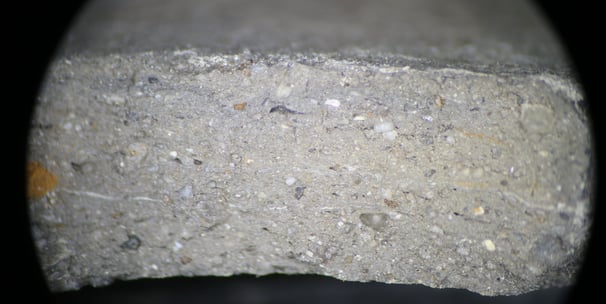THET - Thetford ware
Fine to medium sandy greyware (occasionally partly or fully oxidised): common well-sorted white and grey rounded to sub-rounded quartz sand and sparse fine to very coarse ferrous oxide are the main inclusions, but sparse local inclusions such as flint and mica may occur.
Mainly refers to 'standard' Thetford-type ware, probably from Thetford itself, but has also been used as a general category for this fabric group in the past.
Thin-section description (H. Page): Moderately to poorly sorted, very coarse to very fine sand sized, equant rounded to subrounded quartz with less frequent polycrystalline and microcrystalline quartz. Accessory minerals of common to few elongate biotite mica, micritic calcite inclusions, and rare plagioclase feldspar and ferruginous opaque minerals. Relatively heterogenous, weakly optically active to inactive, dark brown-black, reduced, non-calcareous matrix. Heterogeneity is caused partly through streaks of iron rich clay and the breaking up of micritic calcite inclusions. Common macro- and meso- vugh voids and elongate channels.
Examples from production waste site in Thetford.




Copyright
This website, and the type series, was created by Dr Sue Anderson, Spoilheap Archaeology: www.spoilheap.co.uk
I am available for contract work on pottery from East Anglia and beyond. Email sue@spoilheap.co.uk
© 2024. All rights reserved.
To visit the type series at Suffolk County Council Archaeological Service, Bury St Edmunds, contact Faye Minter: Faye.Minter@suffolk.gov.uk
Tel: 01284 741 228 to make an appointment.